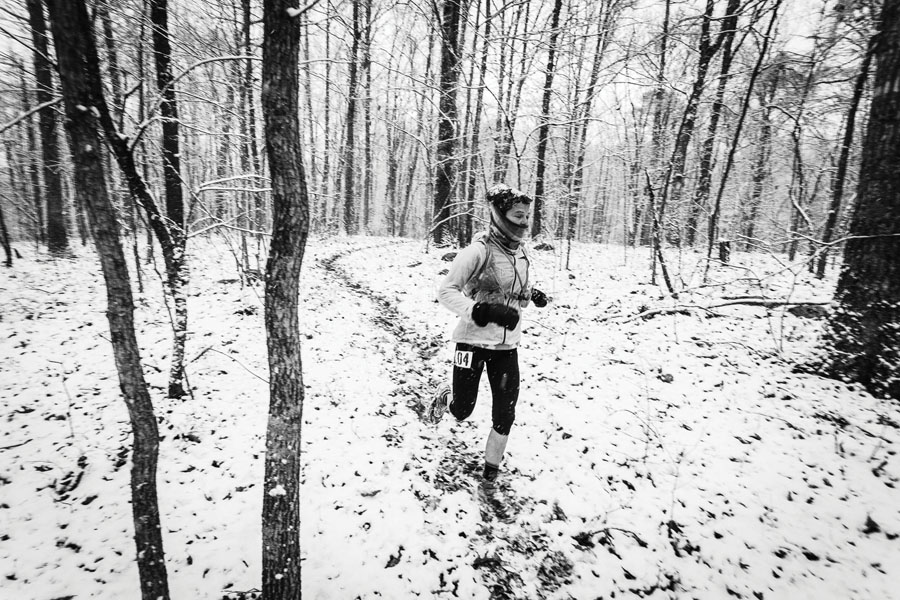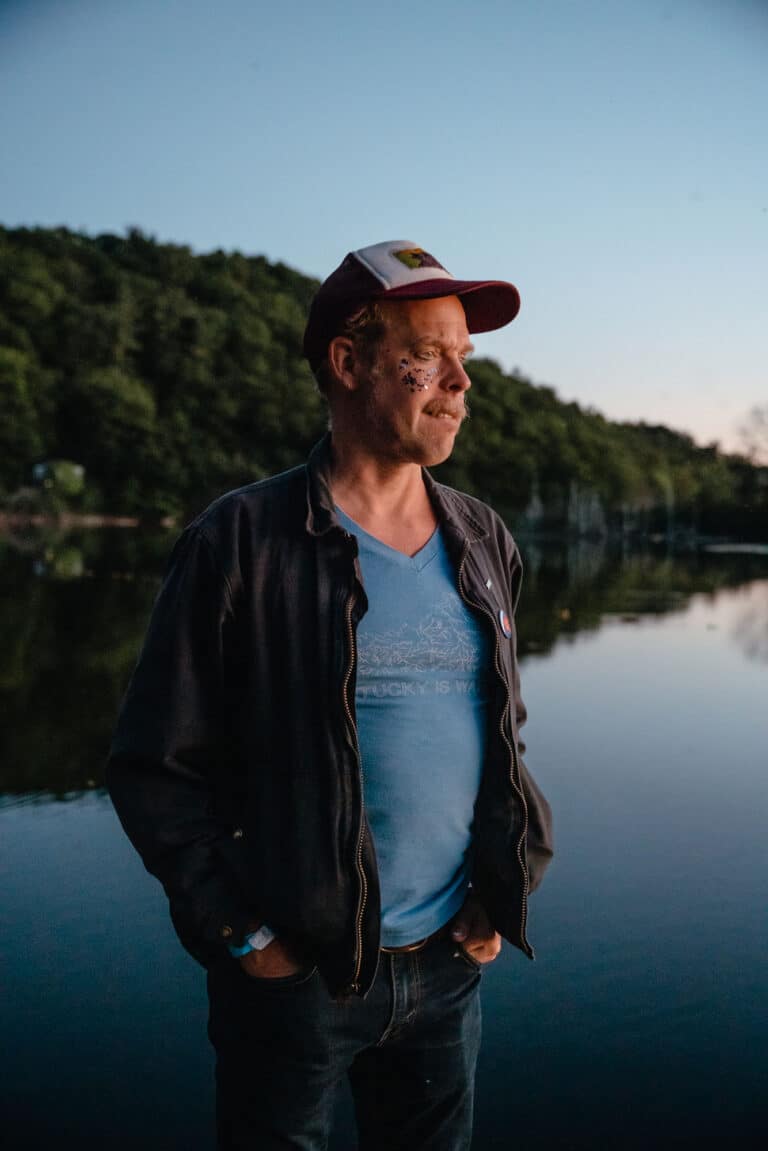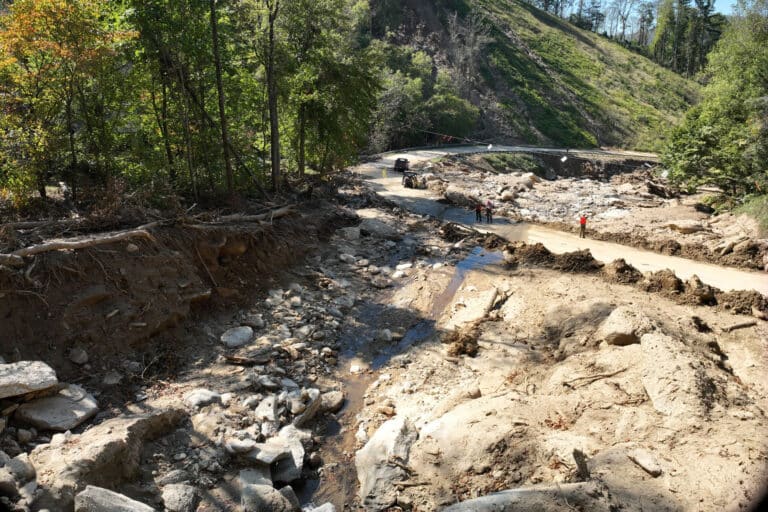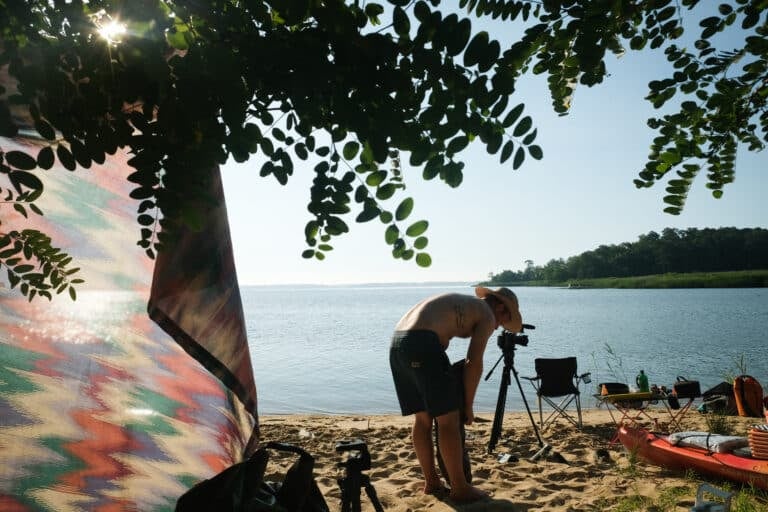STUDIO PHOTOGRAPHY BY CATHY ANDERSON
These seven women are leaders in conservation and adventure who are redefining what it means to do anything “like a girl.”
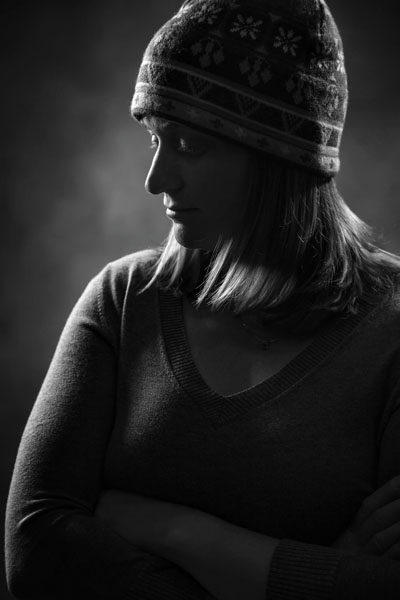 Laura Farrell
Laura Farrell
Program Manager, National Geographic;
Founder, Green River Takeover
Bryson City, N.C.
Were you to meet 34-year-old Laura Farrell at the local brewpub or on the trails near her home in Bryson City, N.C., you might never suspect that she is an absolute crusher on the water. Down-to-earth and overstatedly modest about her nearly two decades’ worth of paddling experience, Farrell has kayaked all over the planet (17 countries to be exact) and consistently placed in the top three at some of the toughest whitewater races in the world.
As a member of Team Dagger, Farrell won regional class V staples like the Green Race (2009, where she tied for first) and the Lord of the Fork (2010). Beyond the Blue Ridge, Farrell has placed first at the prestigious Cherry Creek Race (2010) in California and the Valsesia River Festival (2014) in Italy. She’s plunged over 70-foot waterfalls in Chile and executed numerous self-supported kayaking trips from California’s South Merced (2010) to Siberia’s Biluti River (2017).
Pretty impressive for a Tampa-born mechanical engineering major.
“While I never made mechanical engineering my profession, it definitely helped advance my kayaking. When I was in between my junior and senior year of college, I did an engineering internship at BMW in Greer, S.C. At that time the Green River was running till 5p.m. consistently, so I was pretty much able to kayak every day after the internship. In three months I went from being just a class IV-ish paddler to racing the Green. That was a huge progression for me.”
At the time, says Farrell, the majority of Green River Narrows paddlers were male. She knew of a handful of women who were paddling hard whitewater, but there weren’t many, and it was a rarity to actually see them on the water. But about five years ago, Farrell began to realize that the number of female paddlers was changing.
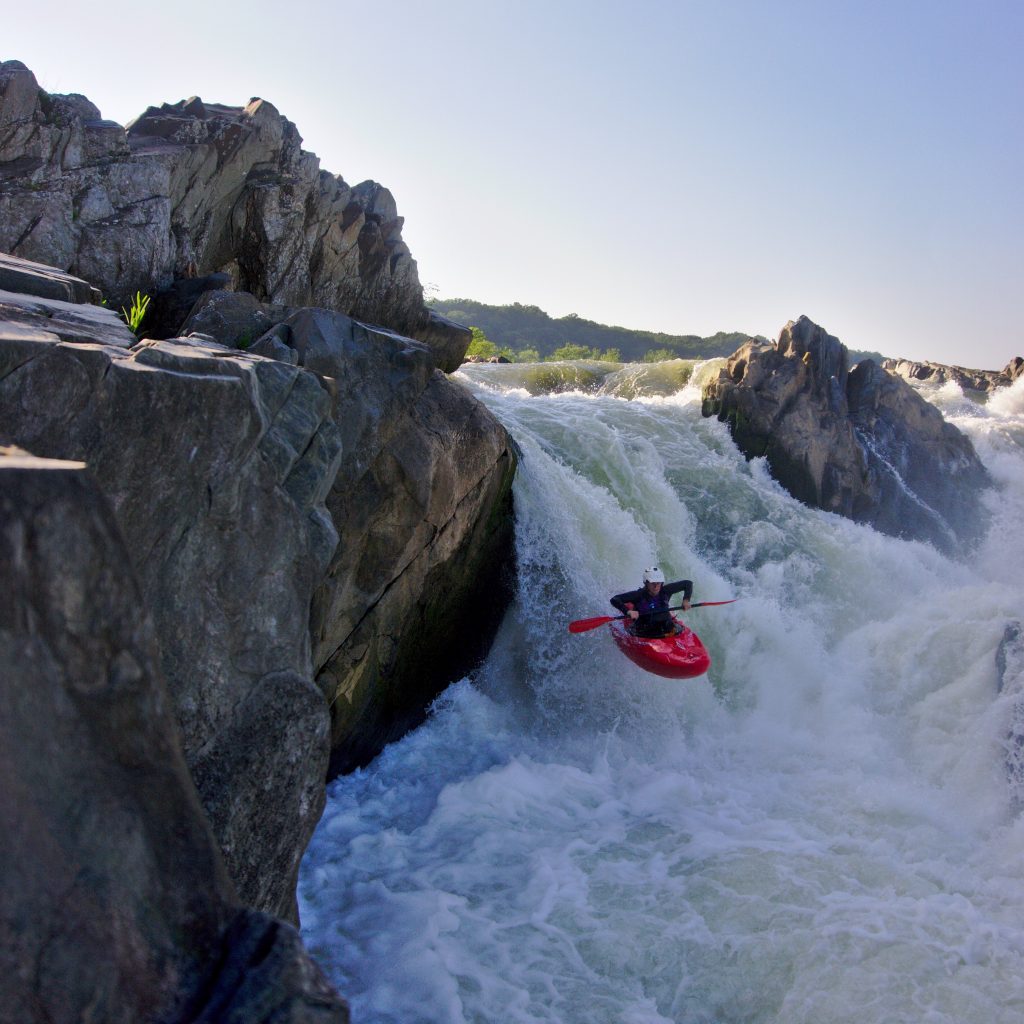
“My original idea was just to invite all of my female friends and go kayaking together on the Narrows, but then I thought, while it would be really cool to have all of my friends out there, it would be even cooler to make it a community event and open it up to more women by including the Upper Green as well.”
The result was the Green River Takeover. The inaugural event took place in October 2014 and brought out 52 ladies who all paddled the class III+ Upper Green. Nearly half of the turnout continued downstream to paddle the class V Narrows. Since then, attendance at the Takeover has continued to rise. Last year, 87 women kayaked the Upper and 43 of those additionally paddled the Narrows.
“I love listening to those women talk about how they met on a previous Takeover and are now a solid paddling crew,” says Farrell. “It really becomes more than just a one-day event. The goal for me is to have a little spirit of the Takeover every single time any one of us puts on the river.”
About the same time Farrell began the Green River Takeover, she started a new career at National Geographic, which turned her into a weekend warrior. While she’s still kayaking the Green and going on paddling expeditions abroad (she just returned last month from a playboating trip to the White Nile in Uganda), she says there’s no doubt her relationship with kayaking is evolving.
“A big challenge for me in the last five years has actually been that I am now on the downward slope of my progression,” says Farrell. “I started to prioritize other things in life and wasn’t running as hard of whitewater which can be a difficult thing to go through. But it’s taught me a lot of awareness about who I am and what I want out of life and why I go out on the river. I want to make sure that every day I put on the river, I’m there because I love it.”
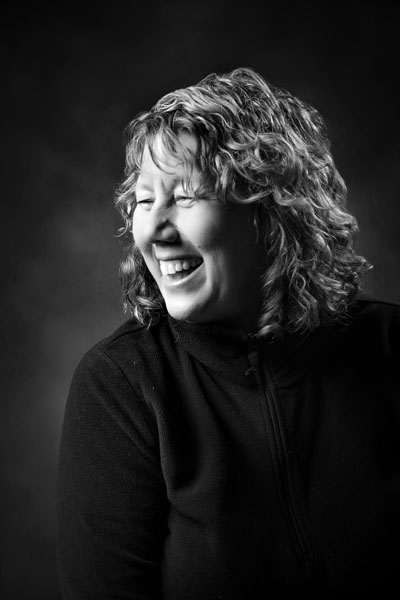 Kathy Zerkle
Kathy Zerkle
River Ranger, National Park Service
Fayetteville, W.Va.
Kathy Zerkle has come a long way since she quit her job as a dental hygienist in Buffalo, N.Y., and moved to the rim of the Grand Canyon with lofty aspirations of being a raft guide.
“I had gone rafting in Ohiopyle and was psyched about that, so I figured, I had moved to Arizona, maybe it was time to spread my wings to see if I could become a raft guide. I must have sent letters to almost every river company in the country practically,” she says. “The only one that responded was North American River Runners (NARR),” located in Fayetteville, W.Va.
This was the mid 1980s, before the days of the Internet, so through snail mail and some level of assumption on the part of NARR, Zerkle was offered a spot on the company’s raft guide training program largely because NARR thought Zerkle was already a Grand Canyon raft guide.
“The first day of training, I fell out at Upper Railroad and got pinned and swam and it was April and cold and the trainers didn’t talk to me again all year. I was the worst trainee. I was not overly athletic to begin with. I didn’t have a background in the outdoors. My dad thinks camping is staying at the Holiday Inn without room service. Needless to say, I didn’t unpack my car for a month.”
But Zerkle was determined to be a raft guide, come hell or high water. She stuck it out, and eventually checked out to be a commercial guide on the New and Gauley Rivers. She went on to become NARR’s river manager for five years, which provided her with year-round work and benefits, a huge step up for any raft guide. That’s not to say that being a raft guide or river manager got easier over time.
“It’s a difficult place to be as a woman,” says Zerkle. “I always had to do twice as much twice as well to get the respect for what I was doing. I always took the heaviest cooler, the weakest crew, and I did it on purpose to show that I had skills. Is that fair? No. But unfortunately that’s our society. Now, more and more at least in the river industry, we’re seeing more respect toward women.”
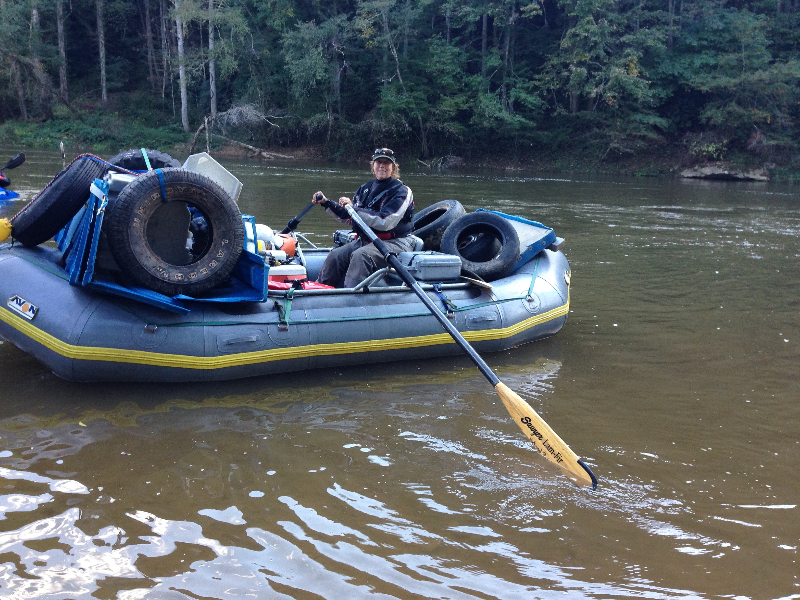
Zerkle eventually decided to go back to school and became a nurse, which didn’t suit her altogether. “I don’t want to be a nurse full-time. I get grumpy, like, this-is-crushing-my-soul grumpy,” she says. So for years she worked part-time as a nurse and raft guide during the summers and as a ski lift mechanic in Telluride, Colo., during the winters.
In 2008, when Zerkle received the chance to serve the rivers she loved so dearly as a National Park River Ranger, her answer was a no-brainer. During the season she’s on the water three or four days a week, assisting in evacuations or helping pick up trash. When she’s not monitoring the New or Gauley Rivers, she’s training other river rangers and paddlers in swiftwater rescue.
You’ll know Zerkle when you see her—always smiling, brimming over with a contagious zeal for life, she’s the only female river ranger out of the New and Gauley’s four rangers, and she’s always in a cataraft that says “PARK RANGER” down the side. In lieu of customers, Zerkle now rafts with trash. Imagine navigating the Upper Gauley with a boatful of tires as your crew.
“Working on the river has made me realize I’m way stronger than I ever thought I was, and you can take that anywhere in life,” she says. “Everybody has had a horrible day when you want to quit, but the river teaches you it’s okay and you’re not a failure because you swam three times in one day. The river has taught me patience, and that you just gotta keep going.”
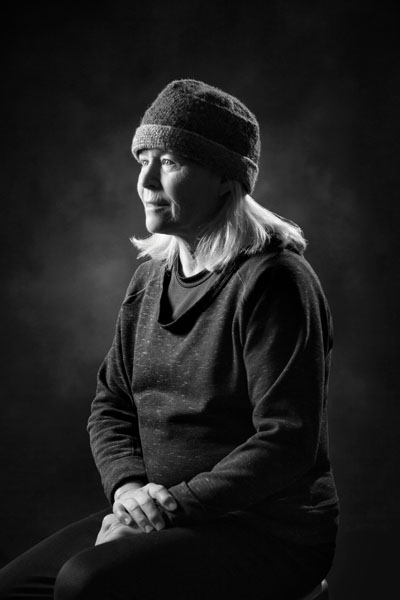 Dee Thomas
Dee Thomas
Adjunct Professor, Lees-McRae College
Regional Director, Catalyst Sports Boone Chapter
Linville, N.C.
Age is just a number to 66-year-old Diane “Dee” Thomas. For over 40 years, Thomas has been rock climbing and skiing all over the world, sharing her passions along the way as an outdoor educator, a career that all began back in 1979 at North Carolina Outward Bound.
“Mike Fischesser was the director at the time, and he hired me even though I didn’t have any rock climbing experience!” she says. “Some of the first climbs I ever did were up near Table Rock in the Linville Gorge.”
Thomas worked off and on for 10 years as both an instructor and course director for Outward Bound, expanding her climbing repertoire well beyond the Linville Gorge. Her more-than-60 climbing expeditions include summits of Mexico’s Popo and Izty volcanoes, Mount Pisco in Peru, and Mount Kennedy in Canada.
But for all of her worldly travels, the thing Thomas is most respected for is her instrumental role in the advancement of adaptive adventure sports. In 1996, Thomas began working for Alpine Towers to provide workshops on high ropes programming for people with disabilities. Her experiences inspired her to develop four adaptive climbing harnesses (the first of their kind) with the help of Misty Mountain Threadworks and create Beech Mountain’s Adaptive Snowsports Center in 2001, which she directed until 2007.
“The most rewarding part of it all is getting to know the participants not as clients but as friends and partners and volunteers who later go on to help create adaptive adventure recreation not only for themselves but other people they may know,” says Thomas. “I’ve been down the Grand Canyon on adaptive river trips and meeting those guys has really prompted me to create as many opportunities as I can for people with disabilities to live their life to the fullest.”
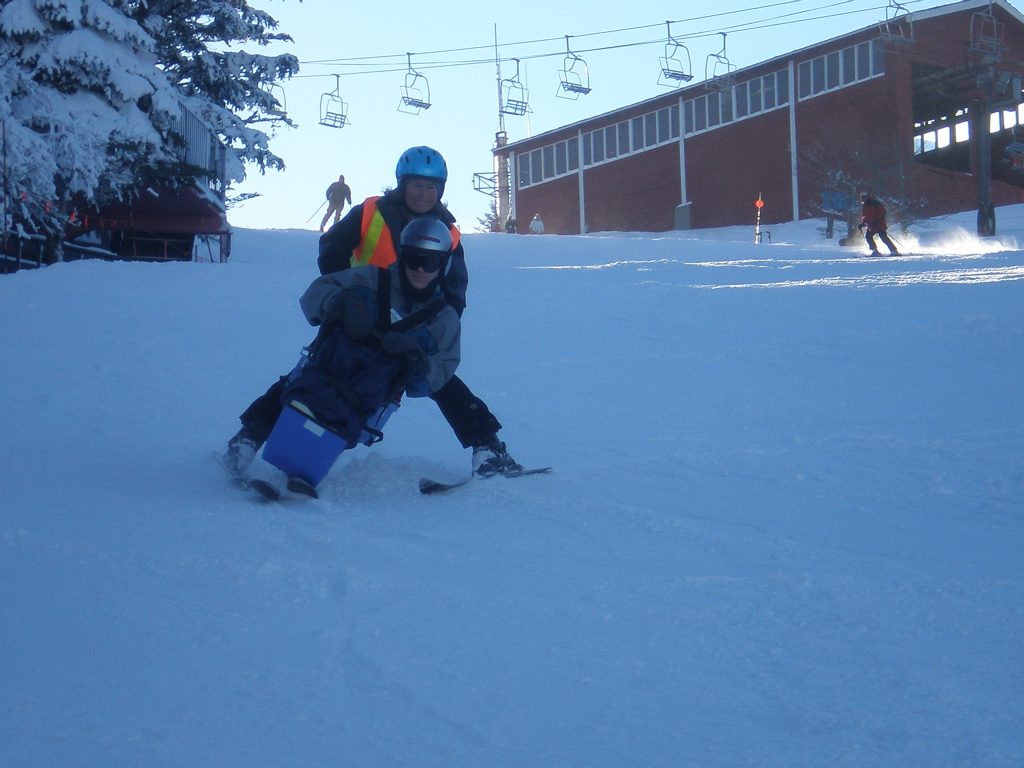
During her tenure at Beech Mountain, Thomas was able to do just that for professional rock climber Timmy O’Neill’s paraplegic brother Sean. In 2005, 2006, and 2007, Thomas traveled to Yosemite National Park and served as ground and summit logistics crew for the O’Neill brothers on their adaptive big wall summits of El Capitan.
Those trips left such an impression on her that when she heard about the Atlanta-based adaptive sports organization Catalyst Sports, directed by Eric Gray and inspired by the Colorado-based Paradox Sports (which Timmy O’Neill co-founded), Thomas immediately enlisted her help. She’s now the Regional Director for the Boone chapter of Catalyst Sports, and says that she is excited for the future of adaptive adventure sports.
“One of the biggest changes I’ve seen in the industry is the advancement of prostheses that now allow someone with two above-the-knee amputations to run and to walk and to go hike. There’s more acceptance and better equipment, which is allowing more participation for people with disabilities. Whether it’s rock climbing or paddling or skiing, these adventures take you to some of the most beautiful places in the world, and how beautiful is that to be able to share that adventure with others, regardless of their ability.”
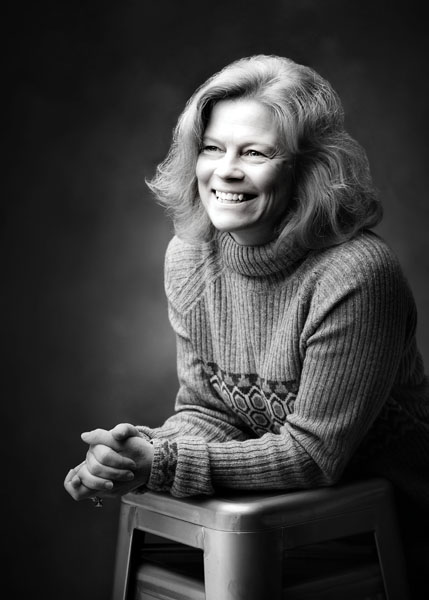 Kim Jochl
Kim Jochl
Vice President, Sugar Mountain Resort
President, North Carolina Ski Areas Association
Sugar Mountain, N.C.
Kim Jochl and Fear have a love-hate relationship. Jochl is very much aware of Fear’s presence, but instead of letting it hinder her from trying new things, Jochl takes Fear by the horns and grapples it to the ground. It’s that unwillingness to bow down to Fear that landed Jochl on the United States Alpine Ski Team from 1986 until 1997, pushed her to earn her pilot’s license (despite being afraid of flying), and thrust her into the literary world as an author of two books.
“One baby step at a time. That’s what I learned through flying,” says Jochl. “When you look down the road and into the future and you see what it will take to accomplish certain things, it is incredibly overwhelming. If I had had any idea what it took to get here, I would have never started.”
After being forced to retire from ski racing due to a number of injuries, Jochl moved to western North Carolina in 1993 to work for Sugar Mountain Resort as the resort’s Special Events Director. For the Massachusetts-born daughter of an Austrian ski coach, the move to North Carolina was one she never anticipated.
“When I found out there was skiing in the South, it was kind of a big surprise,” she says. “One of my injuries prevented me from skiing for the whole year, so I went to school at Appalachian State and became familiar with the High Country. I absolutely loved it. The terrain was a lot like western Massachusetts and New England, but I was pleasantly surprised that the mountains were steeper and a little more dramatic and absolutely beautiful.”
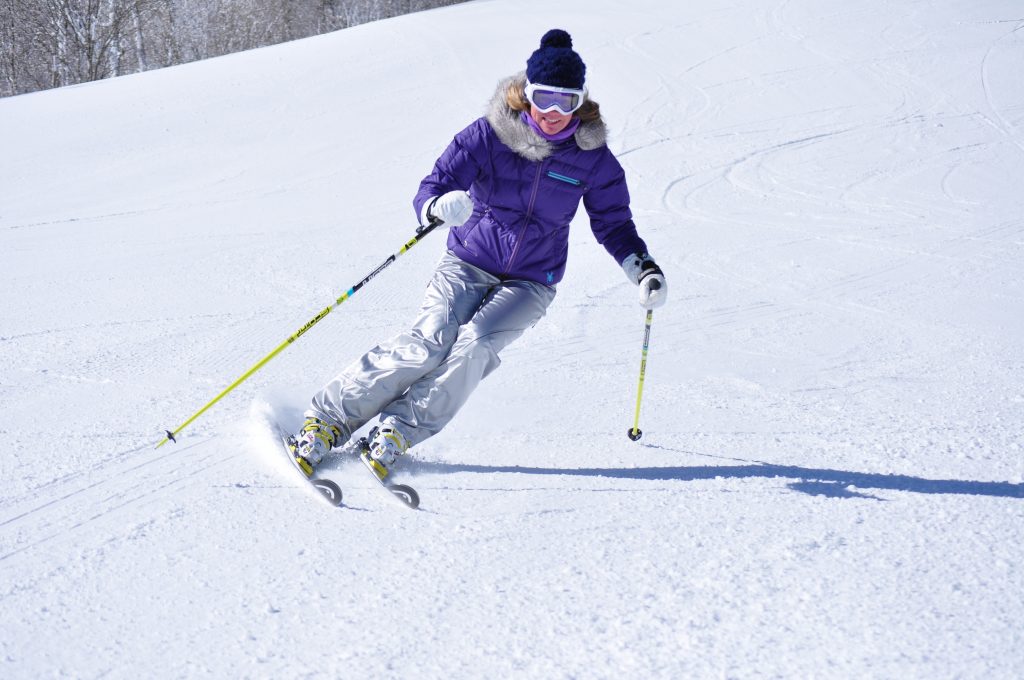
Jochl eventually married Sugar Mountain Resort owner Gunther Jochl, and together, the power couple now manages the booming resort. Gunther has been a pilot since the early 1980s, and though Jochl had flown multiple times domestically and internationally for ski competitions, she found herself increasingly fearful of flying.
“I don’t know why, but my thought was that the only way to manage my fear was to either quit flying altogether or to earn a pilot’s license.”
Never one to back down from a challenge, Jochl went with the latter, and in 2013, she received her pilot’s license. While she was learning to fly, Jochl took pages upon pages of notes, laying out the specifics of her training and debriefing her lessons.
“It was basically therapy,” she says. “I had to find some way to let out my fear and face the fact that I just flew an airplane and would have to go back and do it again.”
Her scribbled notes eventually led to two books. Her first is a memoir titled Fly Baby: The Story of an American Girl, and her second, released just last year, is an autobiographical account of learning to fly called The Aviatrix: Fly Like a Girl. Jochl never dreamed of publishing any writing, short of the press releases and marketing material she creates for Sugar Mountain. But she says that once she acknowledged her fear of failure, she was able to open up and truly enjoy the writing process.
“I had a lot of self doubt, but I tried to move beyond that and just try it,” she says. “My mother was the one who really instilled the thought that it was okay to fail. You’ve gotta try. Sometimes with ski racing, I wish I had accomplished more. When you’re an elite athlete, you want to be an Olympic gold medalist, you want to win world cup races and world championships, but you fail a lot. Being okay with the idea that you might fail can get you pretty far.”
[nextpage title=”NEXT PAGE!”]
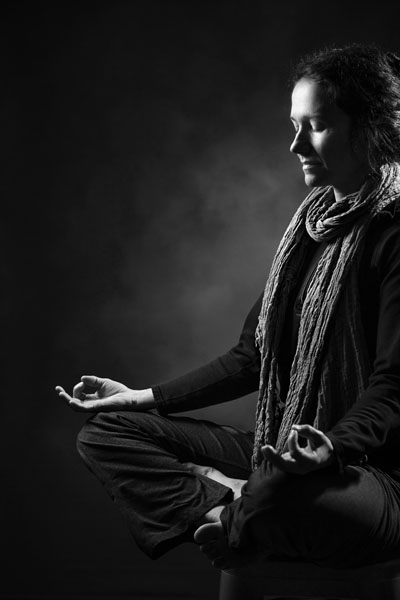 Laura Boggess
Laura Boggess
Professor, Mars Hill University
Board of Directors, Carolina Climbers Coalition
Mars Hill, N.C.
Long before Laura Boggess ever tied a figure eight, she was a conservationist. Born and raised in Burnsville, N.C., Boggess is a western North Carolina girl, through and through. From the time the now 34-year-old was just a child exploring her parents’ farm, she knew she wanted to be outside protecting the natural world.
So when she stumbled upon a graduate program in cliff ecology at Appalachian State University, she found very much like she had discovered her calling.
“I was dumbfounded that someone would pay me money to rappel and check out these cool areas,” she says. “That’s how I got into climbing, and there were definitely times in graduate school where I was doing more climbing than studying.”
But really, climbing and studying were one and the same. In 2013, Boggess married her two passions for conservation and climbing as a member of the Carolina Climbers Coalition Board of Directors. She’s since helped incorporate conservation practices and policies into climbing management plans for areas like Hidden Valley and the Rumbling Bald boulderfield. As climbing gyms continue to rise in popularity, Boggess says it’s important to her to be involved with educating how climbers can also be good stewards, too.
“I’m glad that I started climbing with the awareness of how cool the habitats were where I was climbing,” she says. “I think the biggest reason I love to climb is because it’s such a holistic experience. I know that makes me sound like a hippy, but you’re using your whole body and mind. Everything has to be on the same page. You really feel how connected everything is, and that’s the best vision of conservation.”
Just two years ago, Boggess’ world came screeching to a halt when friend and fellow climber-conservationist Kayah Gaydish died from a 50-foot fall. Boggess and Gaydish were climbing with friends at Hidden Valley when the accident happened. Boggess say she’s met many inspiring people in her life, but none who quite compared to Gaydish.
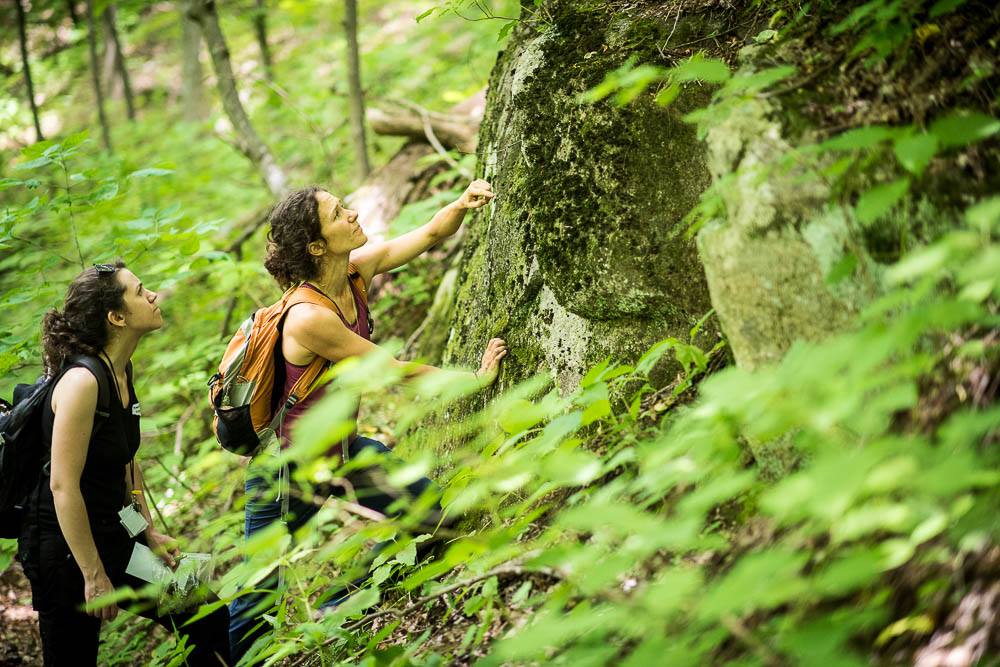
“I think about her so much in the work that I do,” she says. “Of all of the friends and mentors I’ve had, she really stands out as someone who was really special. She was such a role model to me as a conservationist, as someone who loves the outdoors and brings that ethic of stewardship and community togetherness. Kayah was it for me.”
Boggess is now working on a number of climbing and non-climbing related conservation projects, including the Bailey Mountain Conservation Project, a 212-acre tract of land Mars Hill University will purchase next month and preserve for conservation and recreation use. Boggess is also working with the Forest Service in its Pisgah-Nantahala Management Plan to ensure that climbers continue to be a part of the conversation, both as user groups but also as stewards of the rock faces so few people ever see.
When Boggess isn’t in the woods, she’s teaching yoga at Mars Hill University’s Breathing Room, where students and staff can learn the basics of meditation and yoga.
Kathleen Cusick
Assistant Professor, University of Maryland, Baltimore County
Baltimore, Md.
Kathleen Cusick’s near-20-year relationship with running began in 1999. At the time, she was 23 years old, and nearing the anniversary of her sister’s death, whom she lost to cancer when Cusick was just 14 years old.
“I wanted to do something to help fight cancer,” says Cusick. “Her birthday and the day she died are very close together in March, and that week was always so tough for me.”
She joined the Leukemia & Lymphoma’s Team In Training and signed up for her first marathon. Cusick was living in Florida at the time, and that marathon was up in Toronto. Despite it being bitterly cold, she felt strong and empowered. That same year, back in Florida, she saw an advertisement for a 50K trail race.
“I remember reading it out loud and my boyfriend at the time saying ‘You can’t do a 50K.’ That was like waving a red flag in front of a bull.”
The following year, Cusick ran that 50K, and soon, she was signing up for 50Ks and 50-milers like it was her job. Then, just a few years after her very first running race and in the midst of earning her PhD in microbiology from the University of Tennessee, Cusick found her true passion: 100-milers.
“I realized when I was getting my PhD that with 50Ks and 50-milers, I’d get up early in the morning, go run the race, and then try to get back in the lab. It’s like the whole time I was out there I was just thinking about doing this-this-and-this, where with 100-milers, you know you’re going to be out there all day and all night. That’s all you’re going to be doing for the next 24 hours, so it’s more relaxing in a sense.”
She enjoyed those long distances so much so that in 2015 she ran 10 100-milers in a single calendar year. And she didn’t just run them: she destroyed them. She placed first at Fort Clinch 100 in Florida, the Massanutten 100-Miler and Old Dominion 100-Miler in Virginia, the Eastern States 100 and Pine Creek Challenge in Pennsylvania, and the Cloudsplitter 100 in Virginia. She also placed second at a number of other 100-milers and 100Ks like the Vermont and Pinhoti 100-Milers and Hellgate 100K. By all appearances, Cusick was in the prime of her running career, but in 2016, she was diagnosed with both Lyme’s disease and anemia, which slowed her down sometimes to a literal crawl.
“I wouldn’t say I got frustrated, but it could be a little disheartening during a race when I couldn’t breathe or I was feeling weak,” she says. “But at the same time, I just kept trying to learn from it. I kept running even though it wasn’t always pretty. The last six hours of the Vermont 100 were just really, really painful, and not like ow-my-quads-hurt but like deep, internal fatigue where you’re like, how am I going to be able to take another step?”
Still, she managed to eke out a few more wins that year at the Twisted Branch 100K in New York and the Grindstone 100 Miler in Virginia. But by the beginning of 2017, Cusick still wasn’t feeling 100%. At the HURT 100 in Honolulu, she could hardly breathe on her final lap.
“I was wheezing and could hear the anemia taking its toll. For several days afterwards my body was white. It’s like my blood wasn’t circulating properly. I mean, I was cold and we were in Hawaii.”
Still, she kept running, placing first at Double Top 100 in Georgia, the Massanutten 100-Miler, Eastern States 100, Grindstone 100-Miler, and the Vermont 100-Miler, where she ran her second-best time at 17 hours, 39 minutes. Her secret to success is startling in its simplicity: keeping health challenges in perspective between what can be controlled and what can’t, some old-fashioned grit, and a few well-timed mid-race bags of Tom Sturgis pretzels or Saucony Creek Brewing Company beers (carbs are good, especially if they’re Pennsylvania carbs).
These days, Cusick’s health finally seems to be on the upswing. And perhaps more than the trail-aged perspective and pretzels, she says it’s the ultra community that has supported her and kept her going, race after race after race.
“I’ve lived so many different places and I’ve really gotten to know a lot of the different trail running folks. I love ‘em. It’s just a wonderful group of people, and running these races, returning to these trails, is like you’re visiting family. And how fortunate are we that we get to go out in the woods and eat?”
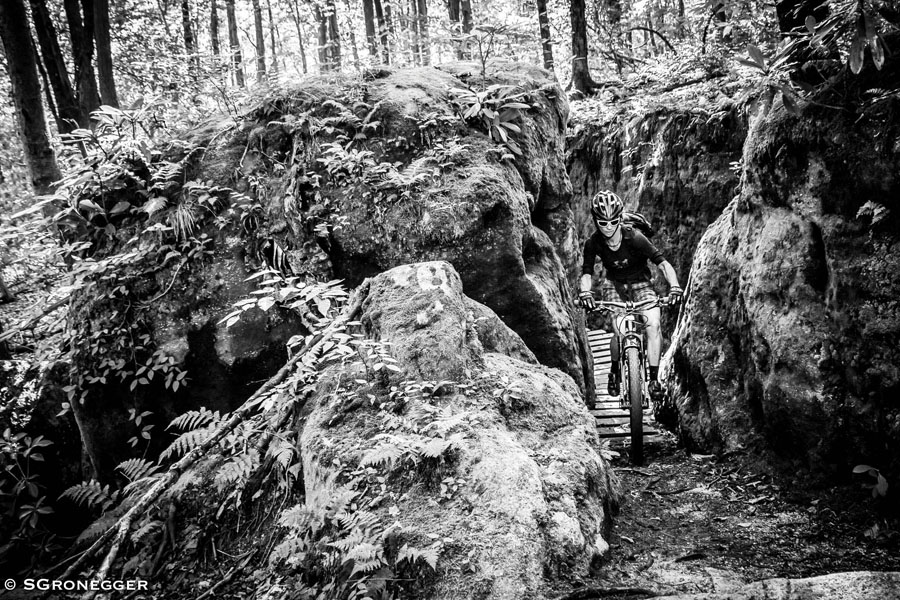
Cassie Smith
League Director, West Virginia Interscholastic Cycling League
Morgantown, W.Va.
When Cassie Smith first bought a bike to commute to her classes at West Virginia University, little did she know that she would continue to ride and compete for 23 years.
“The guys at the shop sold me a men’s large. It was huge. I just rode it anyway, and when I met my husband Jeff who’s a local and who rode in the woods, I started mountain biking. I raced the first year I started riding and I was really green. It was super hard. I struggled big time. I was not super athletic.”
Smith, now 47, hardly let that deter her. She kept at it, competing regularly in the West Virginia Mountain Bike Association (WVMBA) series and enlisting the guidance of top riders like Sue Haywood.
“Every year I just wanted to keep getting faster, and my goal was when I hit 40, I wanted to be in the best shape of my life.”
After long days working for FedEx, Smith would crank out 15 hours on the saddle every week and work out in the gym. And though all of that discipline paid off with podium results, the final race of the 2013 WVMBA series gave her a change of heart about competition.
“All I had to do was finish the race in order to win overall, but halfway through I got stung by this bee. I’m not even allergic to bees but it stung me right on my neck and it took me down. I started having a reaction and about five or six girls took care of me. They gave me Benadryl and made sure I was okay, and they wouldn’t finish in front of me. It was just amazing that they respected the camaraderie here in West Virginia. Those girls could have easily just passed me, and that was a pretty humbling moment for me.”
Smith is still racing. Just last year she won the cat 1 master’s women division at the USA Cycling Mountain Bike National Championships at Snowshoe Mountain Resort. But now, more than anything, she is pouring her energy into inspiring the next generation of riders, which includes her 14-year-old son Levi. Last year, Smith played a pivotal role in creating a West Virginia youth cycling league under the National Interscholastic Cycling Association. She says she’s looking forward to expanding cycling opportunities for her son and other West Virginia youth.
“This year might be the year where I won’t be able to keep up at all,” she says of Levi, who won last year’s WVMBA enduro series in the junior division. “He smokes me on the downhill. I can gain a little bit on the climbs, but I’m losing ground fast. He’s my training buddy, and he’s worked so hard for everything he’s gotten, and I hope I can get other families to see that this is such a great, healthy way to raise kids.”
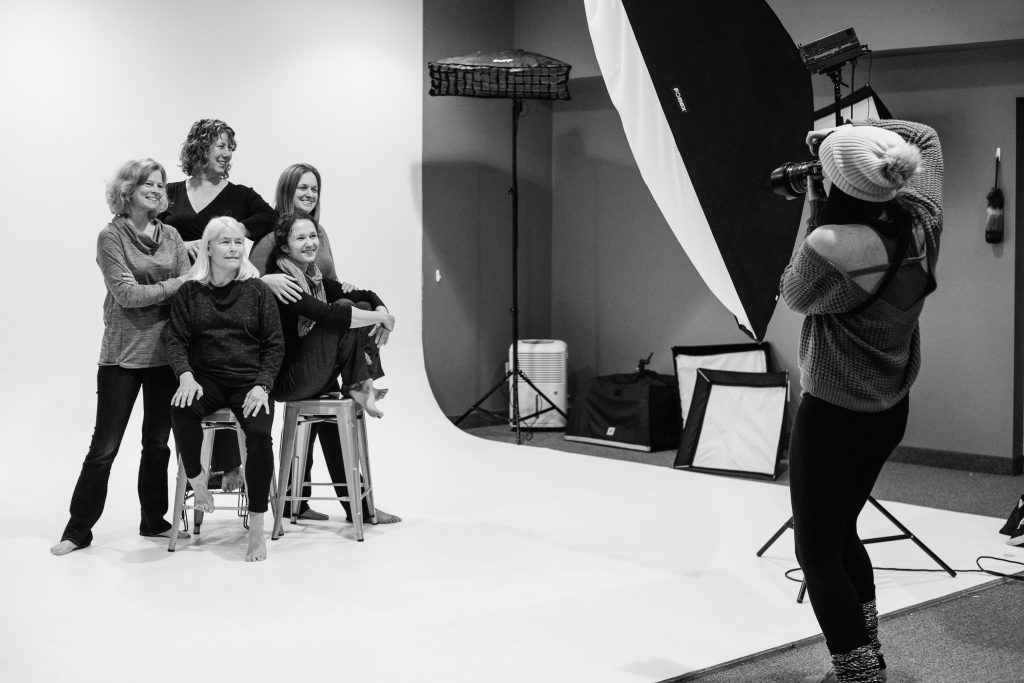
Q+A WITH COVER PHOTOGRAPHER
CATHY ANDERSON
How did you get your start in photography?
CA: My photographic career started in my mid-teens and I am a second-generation photographer. I was trained by my beloved father in traditional photographic techniques, and I like to say that I “grew up in a darkroom” as a film photographer.
What are your favorite and least favorite subjects to shoot?
CA: Favorite: extreme athletes. It pushes me to achieve more than what I thought I could, try new things, and to create portraits in environments where portraits with flash are hard or almost impossible to obtain. Least favorite: Babies. I honestly just don’t have the patience.
If you could go anywhere in the world on assignment, where would you go?
CA: For right now (because it always changes!), I would say either Norway or Greenland. I’ve dreamed of photographing the Northern Lights for quite some time now.
If you could pick one album to be the soundtrack of your life, what would it be?
CA: Dave Matthews Band, Busted Stuff.

